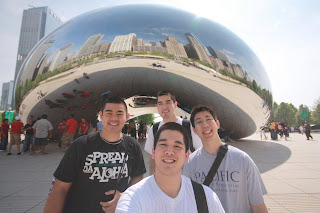Dropbox is a service I would recommend to anyone who had the time to listen. Unfortunately, not many people enjoy discussing favorite software and services so I'll just have to settle for posting my thoughts right here.
So what is dropbox? - I originally installed dropbox as a solution for keeping my school documents synced across multiple computers. But after being a loyal user for a few years now, I realize the powers of dropbox reach far beyond this. Dropbox is the single most easy, robust, and most importantly free back up service I know of. It mirrors your files online so that if anything happens to your computer, your files are still safe in the cloud.
How does it work? - This is by far my favorite thing about dropbox. All you do is install dropbox, and designate which folders you want it to watch. And thats it! Any files created, altered, copied or dragged into your designated dropbox folders are now instantly backed up online. You now have instant, hassle free back up.
What else can I do? - The bread and butter of dropbox is the cloud syncing. But now that your files are online, you've got access to some really nice features.
recover previous versions of any file – dropbox keeps track of every version of every file that gets synced (up to 30 days in the free version). This means that you can roll back any school paper or photoshop file to any previous version you want.
share photos – any folder created within the default photo folder of dropbox creates a new photo gallery. Just drop your photos in here and anyone can view your new gallery just by sharing the public link with them.
share any other file – just like the default photo folder, any file in your shared folder gets a public link you can share as well. This feature has saved me more than once with files to large, or code snippets that aren't accepted as email attachments.
Easy Ways to Get More Free Space – the free account for dropbox comes with only 2 gigabytes of online storage. But you can easily get up to about 13 gigabytes for free by completing some simple tasks, and referring some friends.
1. Once you sign up for your free account, just click on the getting started tab and complete some easy tasks like taking the tour for up to 250 MB of free space.
2. The next stop is dropbox.com/free where you can score up to 1.25 GB for completing tasks like following dropbox on twitter or facebook.
3. Although things get a little tougher at this point the rewards are well worth it. You get 250 MB for each friend you refer and sign up to dropbox, and 500 MB for each referal using a .edu address.
4. About once a year, dropbox holds a dropquest, a online scavenger hunt that awards everyone with up to 1 GB just for participating.
5. And last but not least, yes there are easter eggs. Through the year dropbox will give out various amounts of free space on different holidays or special events so keep an eye out for these.
So thats it for the basics of Dropbox. If you're an advanced user, you can try out some of these creative and interesting hacks to get some additional use out of dropbox. Maximum PC has a nice list of 15 dropbox hacks, Lifehacker has it's own list of clever ways to use dropbox, and Ars Technica has a specialty list for dropbox users on a Mac.


















